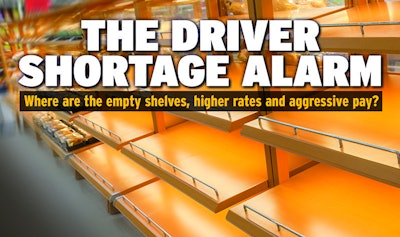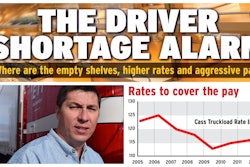I particularly liked the title of the recent report published by the U.S. Bureau of Labor Statistics, “Is the U.S. labor market for truck drivers broken?” As the analysis makes clear, if a legitimate labor shortage has persisted for decades, then something about that market must be weirdly “broken.”
The report, written by Stephen V. Burks, an economics professor at the University of Minnesota Morris, and Kristen Monaco, an associate BLS commissioner, dates driver shortage talk to the late 1980s. The American Trucking Associations “has been arguing [it] systematically since 2005.” (ATA Chief Economist Bob Costello comments on the report in our news coverage of it.)
Insistence “that there is a long-standing shortage of drivers poses a puzzle for empirical labor economics,” says the study. “While it is not unusual for any specific market to be out of equilibrium at a point in time, it is unusual for a market to be consistently out of equilibrium in the direction of a shortage over more than a decade.”
 Senior Editor Todd Dills’ 2016 Overdrive cover story, “Driver shortage alarm,” has been one of the rare in-depth critiques of the driver shortage claim. In a similar vein, the Owner-Operator Independent Drivers Association, which has long argued that the driver shortage is a myth, this year issued a report on the topic.
Senior Editor Todd Dills’ 2016 Overdrive cover story, “Driver shortage alarm,” has been one of the rare in-depth critiques of the driver shortage claim. In a similar vein, the Owner-Operator Independent Drivers Association, which has long argued that the driver shortage is a myth, this year issued a report on the topic.One explanation would be an unusual cause, such as “a regulatory constraint preventing workers from entering employment or changing occupations,” which isn’t the case here. The other possibility: “a misapplication of economic terminology.” Bingo. So the “shortage” could be more accurately described as a one of safe, skilled drivers willing to work at the prevailing compensation.

Agreeing with truckers, the study concludes that pay could indeed mitigate fleets’ labor woes: “Higher earnings in truck driving increase occupational entry, especially among individuals who are willing to work longer hours for higher weekly income.”
Talk as much as you like about how much you need something – a hot steak dinner, a Caribbean vacation, a good truck driver – and moan about all the hurdles in your way. In the case of fleets needing good drivers, those challenges are indeed substantial: aggressive regulations that screen out many prospective or existing drivers, rough working conditions, highly competitive recruiting, high turnover and better jobs outside of trucking.
But those hurdles are industrywide. If a fleet wants more drivers, it pays what the market demands or it does without. It ends up with the number and quality of drivers it deserves at the price it’s offering.
Whatever rationale underlies its pay scales, the motor carrier establishment doesn’t need to pretend it’s the victim of a shortage that for some mysterious reason escapes the balancing forces of the free market year after year after year. As the study released by BLS concludes, “the overall picture is consistent with a market in which labor supply responds to increasing labor demand over time.”
It’s a frustrating, dog-eat-dog market for labor buyers, but broken it is not.











